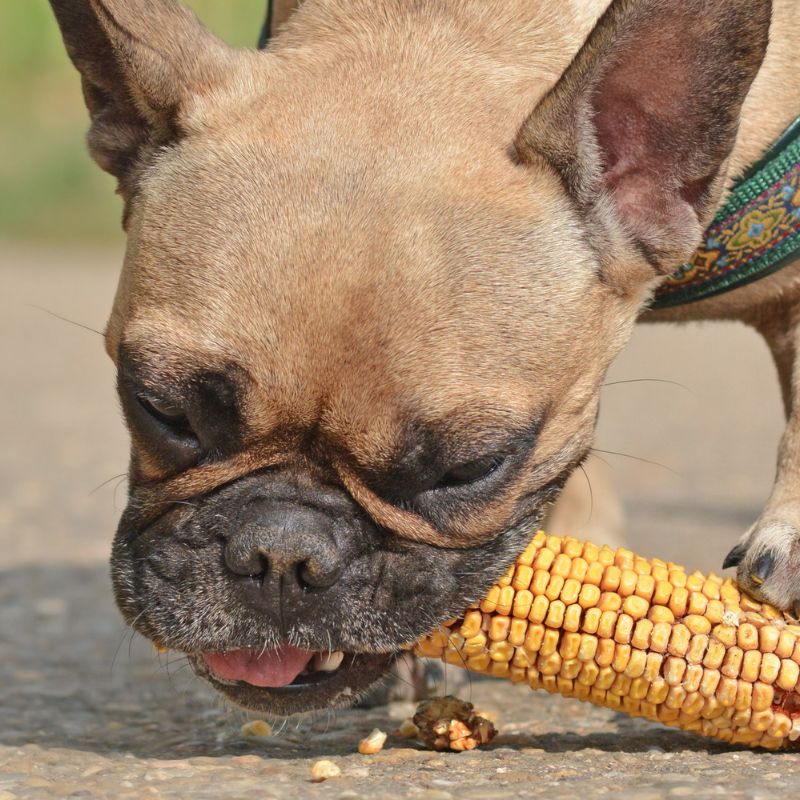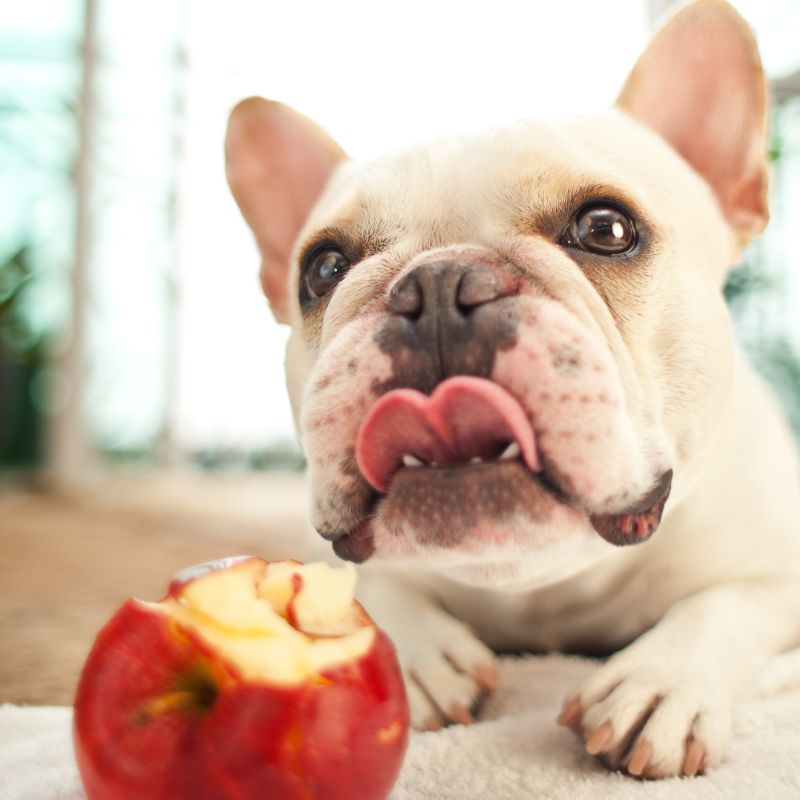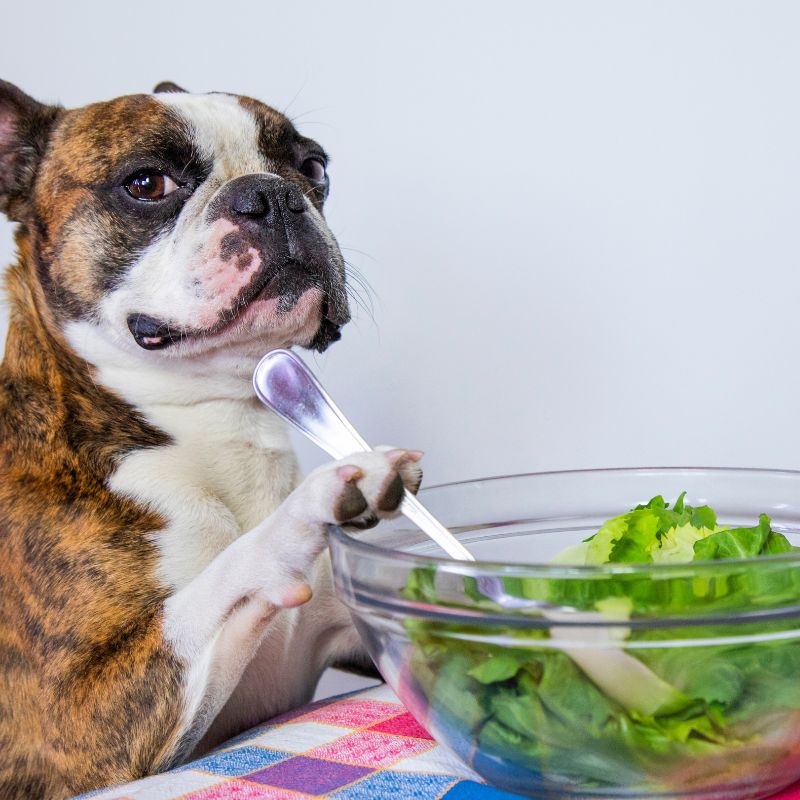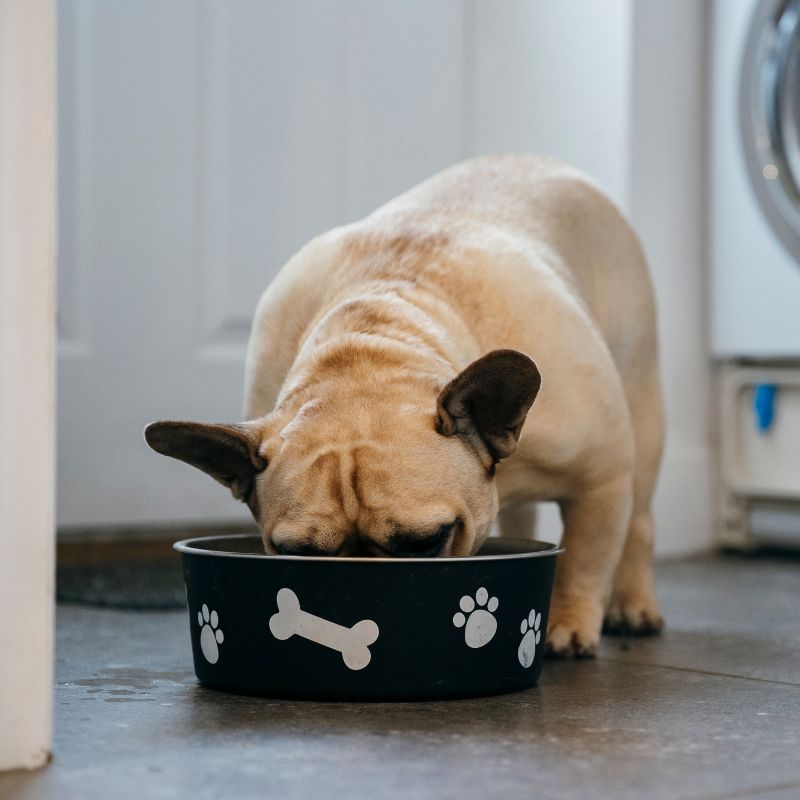What to Feed a French Bulldog: The Ultimate Feeding Guide

Whether your Frenchie is munching on kibble or savoring a homemade blend, what to feed a french bulldog is a top question for new pet parents. French Bulldogs have unique dietary needs: they tend to gain weight easily and are prone to food sensitivities and allergies. In fact, Frenchies are “predisposed to a number of gastrointestinal issues,” with food allergies being one of the most common culprits. Choosing the best diet involves comparing options like raw, dry kibble, canned (wet) food, and homemade meals. This french bulldog feeding guide breaks down each diet type, highlights pros and cons, and offers tips on how to calculate portion sizes at different life stages.

Understanding Your Frenchie’s Nutritional Needs
Every dog is an individual, but French Bulldogs especially thrive on high-quality, balanced nutrition. They don’t need a special breed-specific formula, but they do benefit from food rich in animal proteins and low in fillers. This means that we should feed our Frenchies with human-grade meet and to highly avoid high-carb fillers. Carbohydrates such as potatoes, corn, oat, wheat, and soy are some of the most-common allergy-triggers in Frenchies. These pooches require diets that are rich in lean meat such as chicken breast, turkey, beef, and salmon. They should not eat by-products such as chicken skin, organs, etc.
In short, choose foods with straightforward labels and ample meat. Since some Frenchies can tend to eat poop when they go on strolls, you need to know why they love doing it. Read our blog: French Bulldog Eating Poop: Causes, Health Risks, and Solutions
Allergies & Digestive Health
Frenchies commonly suffer from food allergies and inflammatory bowel issues. Symptoms can include chronic diarrhea, soft stools, or gas. So, you should not be surprised to see your Frenchie having diarrhea after eating something that doesn’t suit their stomach. A diet with novel (less common) protein sources or limited ingredients can help manage allergies. Some owners avoid beef, chicken, grains, or artificial additives if their dog shows sensitivity.
Calorie Needs & Weight
French Bulldogs are compact (typically 20–28 lbs when adult) and can become overweight if overfed. A sedentary 25-pound Frenchie may need around 550–650 calories per day, while a very active one could require up to 800 kcal. Use feeding calculators or basic formulas to fine-tune amounts (see below). Keep an eye on body condition: you should be able to feel the ribs without seeing them. Adjust food up or down to keep your Frenchie at an ideal weight.
Life Stage Requirements
Nutritional needs change as Frenchies age. Puppies grow rapidly and need calorie-dense, nutrient-rich diets for the first year. After about 12–16 months, they transition to adult food.
Senior Frenchies (often around 8+ years) may benefit from highly digestible diets with joint-support nutrients (glucosamine, omega-3s) and possibly slightly lower calories. In all cases, feed high-quality foods that meet AAFCO standards for the appropriate life stage.
Whether you’re wondering “what is the best food to feed a French bulldog?” or drafting your own French Bulldog feeding guide, the bottom line is quality. Avoid unbalanced fad diets; instead choose foods vetted by vets or nutritionists.
Is Raw Diet for French Bulldogs a Good Choice?
Many Frenchie owners explore a raw (BARF) diet—fresh meats, bones, and produce in uncooked form—for their dog. Advocates claim raw diets mimic a dog’s ancestral prey (about 70% water) and note benefits like shinier coats and smaller stools.
Many studies have shown that dogs who eat raw diets are less prone to skin allergies, ear infections and digestive issues. So, if your dog deals with stomach flatulence and farts a lot, then BARF diet is definitely the thing to go for.
Raw diets are high in moisture (around 70% water content), which can help hydration and skin health. It’s an important factor since dry kibble often contains only about 6–10% moisture. Frenchies who struggle with tear stains or gas sometimes see improvement on raw food.
However, raw feeding requires caution. You need to be very careful where you buy meat, eggs and other fresh ingredients. Meat can carry bacteria, so it’s very important to feed your little gremlin with meat from trusted butcheries.
Pros of Raw for Frenchies:
- High moisture content: Helps keep your Frenchie hydrated and supports kidney health.
- Rich in natural nutrients: Whole meats, bones, organs provide protein, fats, and minerals in their natural form. Advocates say it leads to “healthier skin, clean teeth & fresh breath, more energy” and smaller, firmer stools.
- Easy to modify: You can rotate proteins and exclude allergens for a sensitive Frenchie, making it a good option for dogs with known allergies.
Cons of Raw:
- Pathogen Risk: Raw meat can carry Salmonella or E. coli. Owners must handle raw diets like raw meat: wash hands/surfaces thoroughly. The AVMA warns of illness risk to pets and people.
- Nutritional Balance: Creating a complete raw meal is tricky. You need the right mix of muscle, bone, and organs plus supplements. An unbalanced raw mix can miss key nutrients. Many vets and guidelines recommend using commercially prepared raw diets or recipes formulated by a pet nutritionist.
- Cost and Prep Time: Raw food can be expensive, and prepping it (thawing, portioning) takes effort. And because it’s fresh, it must be refrigerated or frozen.
Transition tip: If switching from kibble to raw, do it gradually over about 1–2 weeks to avoid digestive upset. For example, start with ~25% raw mixed into kibble and increase slowlywefeedraw.com. One raw-feeding guide suggests around ½ pound (≈226 g) of raw food daily for a typical 25-lb Frenchie to start, then adjust with age and activityfrenchiestore.com.
Is a Dry Kibble Diet a Good Choice For Frenchies?
Dry kibble is the most common dog food and is completely appropriate for Frenchies—as long as it’s high-quality and the correct portion. Kibble is formulated to be “complete and balanced,” meaning it contains the proteins, carbohydrates, vitamins, and minerals your Frenchie needs. For convenience and consistency, many owners choose kibble.
Pros of Kibble:
- Balanced nutrition: Kibble brands are required by regulations (AAFCO/USDA) to meet dogs’ nutrient needs. They contain protein sources (chicken, beef, etc.), grains or carbs, plus added vitamins and minerals. When you pick a reputable kibble (especially one with meat listed first), you can trust it’s formulated for your dog’s life stage.
- Convenience: It’s easy to store and serve. Kibble doesn’t spoil quickly left out (great for dogs that graze). You can pre-portion meals in advance. Also, kibble is generally the most budget-friendly option per meal.
- Dental benefit: Some vets note that chewing dry kibble can help scrape plaque off teeth, supporting dental health. (Though you still need regular brushing for Frenchies.)
- Long shelf-life: No refrigeration needed. This makes it handy for travel or pet sitters.
Cons of Kibble:
- Lower moisture: Dry food typically has only ~10% water, so it contributes little to hydration. Make sure your Frenchie always has fresh water. Low-moisture diets may not suit dogs with urinary issues or poor water drinkers.
- Potential fillers: Some kibbles fill the bag with grains or starches to cut cost. These high-carb kibbles can contribute to weight gain. Ingredient lists that start with “corn,” “wheat,” or “by-product meal” are signs of low-quality formula. Always read labels and pick a formula with a named meat protein first.
- Palatability: Some picky dogs find kibble boring. If your Frenchie is particular, you might need to warm the food or add toppers.
Is a Canned (Wet) Diet Good Choice For French Bulldogs?
Canned or wet dog food is another solid choice for French Bulldogs. Wet food usually contains 70–80% moisture, higher than raw, because it includes added liquid in the can. This moist formula can benefit Frenchies in several ways:
- Enhanced hydration: The extra water in canned food can help keep a Frenchie well-hydrated. This is especially useful if your dog doesn’t drink much water on their own, or if they have urinary/kidney concerns that require extra fluids.
- High palatability: Canned food is generally more aromatic and flavorful than dry kibble. Picky eaters or older Frenchies with diminished appetite often relish wet food.
- Satiety: Because it’s more filling (it contains more water), wet food can make your dog feel full on fewer calories. This can aid weight management for a breed prone to pudginess.
- Easy on the jaws: Soft wet food can be easier to chew for Frenchies with dental issues or young pups. Besides, if your senior French bulldog lost his teeth or deals with dental problems, then it can be a good pick.
Cons of Canned Food:
- Cost and portion: Wet food usually costs more per serving than kibble. Because of its high water content, you must feed a larger weight of wet food to meet calorie needs. (In other words, a 340g can might equal only about 1 cup of kibble in calories.) A vet source explains that “because canned food has a higher water content than kibble, you will need to feed more on a per weight basis”. This can add up financially if feeding a big dog, though for a small Frenchie it’s less dramatic.
- Spoilage: Once opened, canned food must be refrigerated and used within a few days. It won’t last all day in a bowl like kibble does.
- Dental impact: Unlike crunchy kibble, wet food offers no scraping action on teeth. You’ll need to keep up with brushing and vet cleanings.
In practice, many owners mix wet and dry: for example, serving half kibble, half canned per meal. This “best of both worlds” approach provides some moisture and flavor without completely ditching the convenience of dry. If using both, just be sure to calculate the total calories (see portion guide below). Always check labels and use feeding charts or calculators to find the right combined portion for your Frenchie.
Homemade & Fresh-Cooked Diets For French Bulldogs
Cooking for your Frenchie — either by preparing whole foods at home or using pre-made fresh meals — gives you ultimate control over ingredients. You can choose organic produce, novel proteins, and avoid any preservatives or carbs you dislike. Many owners cook chicken, rice, vegetables, or blend meals especially for dogs with allergies.
Pros of Homemade:
- Ingredient control: You know exactly what’s in the bowl. This can be great for dogs with food sensitivities or for picky eaters. You can focus on high-quality meat and add supplements like fish oil or bone broth.
- Freshness: Home-cooked meals contain minimal processing. Fresh ingredients often mean more natural vitamins and moisture in each bite.
- Variety: You can rotate proteins and veggies, preventing monotony and catering to taste.
Cons & Cautions:
- Nutritional balance: This is the biggest challenge. Homemade diets can easily be unbalanced. If you miss amount of calcium or vitamins, then it can harm your Frenchie over time.
- Time & Cost: Preparing meals daily is labor-intensive. It may also be more expensive than kibble or canned unless you’re cooking in bulk.
- Consistency: Dogs thrive on a consistent diet. Frequent recipe changes without caution can upset the stomach.
If you opt for a homemade diet, follow recipes vetted by pet nutrition experts or consult your vet. For example, some home-prepared diets use plain boiled chicken and brown rice plus pumpkin; others mirror ingredient ratios recommended by AAFCO (often 80% meat/bone/organs, 10% veggies, 10% supplements).
Comparing Diet Options
Here’s a quick recap of how the diets stack up for a French Bulldog:
- Raw Diet: High moisture, high protein, potentially healthier coat/skin and digestion. Good for dogs with allergies to fillers. Needs careful handling and vet guidance.
- Dry Kibble: Balanced and convenient, promotes chewing and easy storage. Watch for low-quality brands that skimp on protein. Often recommended for puppies and as a base diet.
- Wet Food: Hydrating and tasty, good for picky or older dogs. Usually higher in quality protein but more expensive. Must manage portion size closely due to water content.
- Homemade/Cooked: Total ingredient control; can be great for special cases. Only recommended if you ensure it’s nutritionally complete (consult a vet).
There is no single “best food” for all Frenchies—choices depend on your dog’s health, your budget, and lifestyle.
Feeding Guidelines by Life Stage
Calculating how much food a French Bulldog needs depends on age, weight, activity, and diet type. Below are general guidelines for different stages:
Newborn (0–8 weeks)
Puppies nurse on mother’s milk. If mother cannot nurse, use a puppy milk replacer. You would feed about 180 ml of replacer per kg of puppy body weight per day, divided into many small feedings (every 2–4 hours). (Never give cow’s milk or other milks.) This continues until about 6–8 weeks old.
Weaning to Young Puppy (8 weeks–6 months)
By 6–8 weeks, Frenchie pups start eating solid puppy food. Switch gradually from milk to high-quality puppy kibble or puppy-formulated raw diet. At first feed 3–4 times a day, then 3 times/day by 4–6 months. Use a puppy feeding chart (many kibble bags have them) as a starting point. For example, a large Frenchie puppy (10–20 lbs at maturity) might start on several cups per day of dry puppy food, splitting that over meals. Always adjust according to body condition.
Adult (1–7 years)
Once fully grown (about 12–16 months for a Frenchie), switch to adult food. Feed 2–3 times per day to help with digestion and reduce bloat risk. Portions will depend on your dog’s weight and metabolism. One rule-of-thumb for raw diets is to feed about 2–3% of the dog’s body weight in food per day (for a 25 lb Frenchie, that’s roughly 227–340 grams of raw food). Another approach is to calculate Resting Energy Requirement (RER).
RER formula
RER=70×(body weight in kg)0.75RER = 70 \times (body\ weight\ in\ kg)^{0.75}RER=70×(body weight in kg)0.75. For example, a 25 lb (11.3 kg) Frenchie has RER ≈ 70×(11.3^0.75) ≈ 430 kcal.
Then multiply by a factor for activity: spayed/neutered adults ~1.4–1.6×RER; intact or working dogs ~1.6–1.8×RER. So a moderate pet Frenchie might need ~600–700 kcal/day. Compare that with the calories in your chosen food to get a daily serving size. Always adjust up/down based on body condition.
Using feeding charts: Many puppy and adult foods provide recommended daily amounts by weight range. These are good starting points. For example, if a chart says a 20 lb dog needs 1.5 cups of a given kibble daily, try that and monitor weight. Be ready to tweak portions.
Senior (8+ years): Senior Frenchies may be less active or have joint issues. They often do well on the same high-quality adult diet but may need fewer calories (to prevent weight gain) and more joint-support nutrients. Some owners switch to senior formulas with glucosamine/chondroitin. Continue feeding 2 meals per day. If mobility or appetite is a concern, you can mix a bit of wet food or warm water into kibble to make it more appetizing and easier to chew. Always consult your vet, as some older Frenchies develop kidney or heart conditions that require special diets.
General Calculation Tips
Use the feeding guide on the food label as a baseline, then refine:
- Keep track of your dog’s weight and body condition. If your Frenchie is gaining too much weight, cut back slightly; if underweight or very active, add more.
- Remember that treats and table scraps count toward daily calories. A good rule is that treats should be <10% of daily calories.
- For raw or homemade diets, a kitchen scale and measuring containers are your friends to ensure consistency.
Many owners find success by splitting daily food into two meals (morning and evening) and feeding at the same times each day. This routine can aid digestion and keep your Frenchie satisfied.
How to Transition and Mix Diets
If you change your Frenchie’s diet (say, from kibble to raw, or from one brand to another), transition gradually over 7–10 days to avoid upset tummy. Start by mixing 25% new food with 75% old food, then gradually increase the new food portion every few days.
You can also mix wet and dry in one meal: For example, if your dog’s daily calorie need is 600 kcal, and your wet food provides 150 kcal per cup and kibble provides 120 kcal per cup, you might feed 1 cup wet + 3.5 cups dry per day (split between meals). Always check the feeding instructions and calorie content (often given on the label) when mixing.
Conclusion
Deciding what to feed a french bulldog boils down to finding a high-quality diet that your dog likes and tolerates. There is no one-size-fits-all, but by understanding the pros and cons of raw, kibble, canned, and homemade diets, you can make an informed choice. Puppies should start on good puppy food (kibble or balanced fresh diet) with frequent feedings, and adult dogs do well on regulated meals of balanced food (fed 2–3 times daily). As a general rule, use the bag/can feeding chart or an RER calculator as a starting point, then adjust to keep your Frenchie at an ideal weight and health.








 French Bulldog Jackets & Coats
French Bulldog Jackets & Coats French Bulldog Dresses & Skirts
French Bulldog Dresses & Skirts French Bulldog Hoodies
French Bulldog Hoodies French Bulldog Sweaters
French Bulldog Sweaters French Bulldog Shirts
French Bulldog Shirts French Bulldog Pajamas
French Bulldog Pajamas French Bulldog Costumes
French Bulldog Costumes French Bulldog Life Jackets
French Bulldog Life Jackets

 French Bulldog Collars
French Bulldog Collars French Bulldog Harness
French Bulldog Harness
 French Bulldog Backpacks
French Bulldog Backpacks







